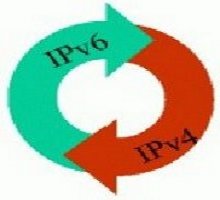Assigning The Last Of IPv4 Addresses
 Let me go a little bit technical in my blog today and talk about the exhaustion of Internet Protocol version 4 (IPv4) addresses and the eventual use of IPv6 addresses in its place. Again, I wish to state that I am not a techie and my concern in following this issue is about how the shift could affect our access to the Internet. Will there be interruption of Internet service or the shift from IPv4 to IPv6 will not be noticeable at all at our end as ordinary subscribers of our Internet service providers (ISPs).
Let me go a little bit technical in my blog today and talk about the exhaustion of Internet Protocol version 4 (IPv4) addresses and the eventual use of IPv6 addresses in its place. Again, I wish to state that I am not a techie and my concern in following this issue is about how the shift could affect our access to the Internet. Will there be interruption of Internet service or the shift from IPv4 to IPv6 will not be noticeable at all at our end as ordinary subscribers of our Internet service providers (ISPs).
It was in the news that the last IPv4 addresses have been allocated according to an announcement made by the Internet Assigned Numbers Authority (IANA) at an event in Miami, USA last Thursday. Each of the five regional Internet registries has been allocated a single block of around 16 million addresses. While true exhaustion of IPv4 addresses would be hard to gauge, the event highlights the need for companies and organizations to move to IPv6 system amid the ever increasing number of net-connected devices.
Yes, it cannot be predicted as to when this last allocation of IPv4 addresses will get exhausted. It will depend largely on the rate at which the different registrars will issue their allocations and a small number of IP addresses will be held for the transition. The information shows APNIC, the registrar in the Asia-Pacific region, will likely run out first in the next few months which should make us more concerned than the rest of the world.
Whereas IPv4 only had 4.3 billion addresses due to its 12-digit structure, IPv6’s 39-digit structure dramatically increases the number of available addresses and makes exhaustion practically impossible for the foreseeable future. Every connected device needs an IP address to communicate so the adoption of IPv6 is now of paramount importance. It will allow the Internet to continue its amazing growth and foster the global innovation that we all expect to happen.
Many ISPs and companies have already been working for quite some time on the implementation of IPv6 so this milestone will likely go unnoticed for quite awhile. In the case of our country, the previous administration in its last days, issued Executive Order No. 893 dated June 18, 2010 promoting the deployment and use of IPv6. While this development may not concern the users at home, businesses especially those dependent on their Internet connections like i-cafés are advised to be aware of the status of IPv6 deployment.




ISPs, I believe, should already be starting/doing something about the IP issues. I have no idea if they are.
During the preparation of the implementing rules on the implementation of EO 893, representatives of two (2) ISPs said that they are ready to deploy IPv6 anytime soon. One of them even bragged that it is just a matter of switching their system on. Personally, I do not know if he is telling the truth or he is just making a sales talk.
I doubt they are really ready. Switching to IPv6 isn’t as simple as pushing a button. Perhaps on their sides, but the effect to the subscribers is “unknown”. Are the hardware – modem – they use on their clients already “IPv6 ready?
The USA is digging in their heels about IPV4 just like we do with our ridiculous English system of measurements that even the English have mostly abandoned. I’m told the Koreas and some of SE Asia is already on IPV6. We just need to agree that on some date everyone will switch over. Nobody is gonna spend money to update their networks unless they are forced at gunpoint. Network downtime is so costly in the short run.
More than one-third (1/3) of the more than four (4B+) billion IPv4 addresses were allocated to USA territory. This could be the reason why USA is dragging its foot on the issue, they have more than enough at the moment. The rest of the world especially the Asia-Pacific region will soon run-out of IPv4 addresses so we have no choice but to rush the deployment of IPv6.